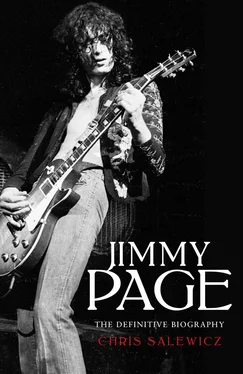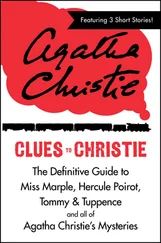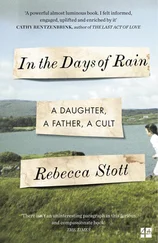But Page had a longstanding relationship with the art of destruction, and had been preparing for a career of hotel-wrecking since early in his life. At the rear of the secondary school he went to, on Epsom’s Danetree Road, there was a bomb shelter left over from the war. Although efforts to destroy it had been made on several occasions by his fellow pupils, it was a 14-year-old Jimmy Page who finally succeeded.
In what seems less an example of urban terrorism and more like a yarn from one of Richmal Crompton’s Just William stories, an older boy had combined sodium sulphate, weed killer and icing sugar to make several miniature bombs. A couple of these had exploded in the school grounds, with the blame always attributed to the rough kids from the neighbouring council estate.
But then this arms race escalated. Another boy constructed a pipe bomb and placed it inside the bomb shelter. Once lit, however, the fuse on the bomb burned interminably slowly. After some 20 minutes without much progress, one of boys offered a solution: he had a fuse taken from a Jetex, a motor for model aircraft that was popular at the time, which they put in the pipe bomb.
‘But nobody dared light it,’ remembered Page’s friend Rod Wyatt. ‘So Jimmy said, “I’ll do it.” So he goes in the entrance of the shelter, and then he comes running out. As he runs out it goes off: P-F-O-O-F! B-R-A-MMM! And the whole corner, which was thick concrete, flies up in the air, bricks following it. And Jimmy is running out, laughing his head off into the playground.
‘Reflecting on this, I thought, “Was that a sign of the times? That he was going to be part of the loudest rock ’n’ roll band ever?” This gentlemanly young guitar player says, “I’ll light the jet engine. I don’t mind.” It fits Led Zeppelin perfectly.’
1
SPANISH GUITAR IN SURREY
Born at 4 a.m. on 9 January 1944 in Heston, Middlesex, on the far fringes of London’s western suburbs, James Patrick Page was the son of an industrial personnel manager, also called James, and Patricia, a doctor’s secretary. The future superstar musician’s name was a combination of both of his parents’, who had been married at Epsom Register Office on 22 April 1941.
According to the mythology of his rock-star legend, Jimmy Page was ‘born on a full moon’, with all the occult, mystical weight that that phrase carries. Yet this is not precisely true. He was in fact born 31 hours before the full moon of 10 January 1944. While the baby boy and his mother might have felt the powerful energy of the rising Cancer full moon as he was born, the earth’s only natural satellite was not yet at its peak. In time Page would become a student of astrology; he would learn that in his astrological chart his moon was in moody Cancer, his sun sign was determinedly ambitious Capricorn, and he had Scorpio rising, with its suggestion of powerful sexuality and interest in arcane areas of life.
To an extent this only child – until he started school at the age of five he hardly knew any other children – was always self-educated, manifesting a strong sense of self-fulfilment, even destiny – though there is often something fixed and inflexible about the self-taught. ‘That early isolation probably had a lot to do with the way I turned out,’ he said later. ‘Isolation doesn’t bother me at all. It gives me a sense of security.’
Heston, his birthplace, has a distinct sense of J. G. Ballard-like suburban anonymity, the net curtains firmly drawn on all manner of potential darkness. Heston lies on the direct flight-path into Heathrow Airport, less than three miles away, and today is a place blighted by the ever-present roaring reverse thrust of descending jet airliners. It was the beginnings of this noise pollution that led the Page family to move first to nearby Feltham, a distance of some four miles, where unfortunately the noise from aeroplanes was even more acute, and then the ten miles or so to the south-east, to 34 Miles Road in Epsom, Surrey, in 1952. (In 1965 Page would, with Eric Clapton, record a song entitled ‘Miles Road’.)
Eight-year-old Jimmy Page was enrolled at Epsom County Pound Lane Primary School, and at the age of eleven he moved on to Ewell County Secondary School, on Danetree Road in adjacent West Ewell. His headmaster, Len Bradbury, who took over in 1958 when Page was in year three, had played football for Manchester United, and Bradbury’s arrival at the school was only a few months after his former team had been decimated in the Munich air disaster. (Many years later Bradbury would be a guest of honour at Manchester United’s ground, with pictures of him taken with the team’s captain, Roy Keane, and Ryan Giggs.) Page was in the proximity of celebrity – and he could see that such individuals were sort of ordinary people.
At 34 Miles Road, Page discovered a Spanish guitar that had been left behind, presumably by the previous occupiers. Had it ever been played? Perhaps not. In the 1950s a Spanish guitar as an objet d’art in the home was considered a sign of sophistication. ‘Nobody seemed to know why it was there,’ he told the Sunday Times . ‘It was sitting around our living room for weeks and weeks. I wasn’t interested. Then I heard a couple of records that really turned me on, the main one being Elvis’s “Baby Let’s Play House”, and I wanted to play it. I wanted to know what it was all about. This other guy at school showed me a few chords and I just went on from there.’
‘This other guy’ was called Rod Wyatt. Although fascinated by the Spanish guitar, Page all the same had been flummoxed by how to play the instrument. During a lunch break at secondary school, he came across Wyatt, who was in a class a couple of years above him. The owner of an acoustic guitar of his own, Wyatt was running through a version of ‘Rock Island Line’, a chart hit by the revered Lonnie Donegan, when he met Page. In response to the younger boy’s query, Wyatt instructed him to bring his Spanish acoustic to school and he would show him how to tune the instrument. From then on the pair became firm friends.
‘My mate Pete Calvert and I were always at Jimmy’s house bashing out our guitars for a couple of hours on a Saturday afternoon,’ said Wyatt. ‘Sometimes I’d go round to Jimmy’s and his mum would say, “No, he’s practising.” When he suddenly realised he had it, he spent a lot of time practising. Sometimes six or seven hours a day. He told me he needed to improve his technique. And he eventually became the all-round perfect guitarist. Practice is what it’s all about.’
What had really turned Page on in Elvis Presley’s rockabilly song ‘Baby Let’s Play House’, released in the UK six days before Christmas 1955, was the guitar playing of Scotty Moore, who served as Presley’s guitarist from 1954 to 1958. On 5 July 1954 Moore had, with bassist Bill Black and Elvis himself, mutated the original arrangement of ‘That’s All Right’ by bluesman Arthur Crudup into a version that combined blues and country music, creating one of the foundations of rock ’n’ roll.
‘Scotty Moore had been a major inspiration in my early transitory days from acoustic to electric guitar. His character guitar playing on those early Elvis Sun recordings, and later at RCA, was monumental. It was during the fifties that these types of song-shaping guitar parts helped me see the importance of the electric guitar approach to music,’ said Page.
On ‘Baby Let’s Play House’ Moore played a burnished rockabilly rhythm. Page’s love of the tune would not leave him, even after almost 20 years: about nine minutes into the live version of ‘Whole Lotta Love’ in the Led Zeppelin film The Song Remains the Same he breaks into a close simulacrum of Moore’s licks. But that was a long way in the future: for now the 12-year-old Page assiduously studied and copied Moore’s parts. There could hardly be a purer, more perfect example of this brand new musical form, an ideal introduction to what his life would become. Every day he would take his guitar to school on Danetree Road.
Читать дальше












